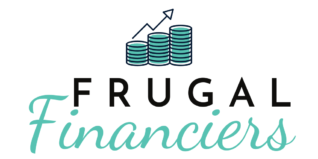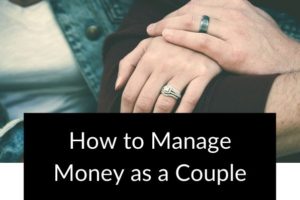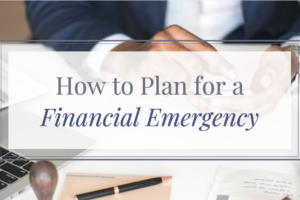A no-spend challenge is a great way to not only save money but also change your spending habits.
Spending habits cannot just be changed with a simple declaration. That’s why they’re habits.
It’s an unconscious action that you’re doing without thinking.
But, a no-spend challenge brings spending into your conscious thoughts.
You realize how much you spend on eating out when you have to figure what to eat because you’ve decided not to spend at restaurants for the next month.
Figuring it out replaces those unconscious spending habits that are eating up all of your money.
A no-spend challenge has the direct benefit of reducing your spending and saving you some more money.
But, you’ll also likely spend less after a no-spend challenge by developing better spending habits.
If you want to join an awesome 4 week no spending challenge, sign up to our email list at the bottom of this post to get your free #SAVEMORE Challenge printable! It guides you through 4 different challenges to do for the duration of one month so you can save more and live better!
First though, you want to look at how you’re spending.
Reviewing and Categorizing Your Spending
You can do no-spend challenges without reviewing and categorizing your spending, but it will probably not be as impactful.
All you have to do is figure out a way to get all of your transactions in one place and then categorize them.
And, really we’re just looking at those nonessential expenses.
We use Moneywise to track and categorize spending as well as create budgets.
We’ve also used Personal Capital and Mint in the past, which we recommend.
Once you know where you’re spending, it’s much easier to decide where you’re not going to spend.
How Long Should You Do a No-Spend Challenge
We recommend doing any of the following four challenges for 7 – 30 days.
You can also do no-spend challenges for a month, starting on the first day of the month which creates some synergy.
Whenever we do our no-spend challenges, we go for 30 days to give ourselves a bit more of a challenge.
It also is more impactful because we save more money and we’ve had to go without something for longer, making it less of a spending habit.
The longer you go the more difficult it will be but the better you’ll feel once you’ve accomplished the challenge.
A Note on Using Special Occasions as Rewards
These are no-spend challenges, not no-spend punishments.
The end goals are to save some money and maybe change the way you spend money.
Not to feel like crap because you can’t spend money.
There might be events that cause you to want to break your no-spend challenge or make you feel like you’re failing your challenge if you spend money.
You should treat those special occasions like rewards and do them.
Don’t miss out on a friend’s birthday because you have a no-spend challenge going on.
If it’s a movie premier and certain movie premiers are your thing, you should go.
This is about changing bad habits and those are not bad habits.
What’s even better is that if you treat these special occasions like rewards, you’ll feel even happier being there because you’re spending money on special stuff.
It will help you to see the difference in value between a good reason to spend money and just another Tuesday at the Red Lobster.
Now that we’ve covered that, it’s time for the challenges.
Beginner No-Spend Challenge: No Spending at One Type of Place
If you’re just starting to try and change your spending habits, it’s best to ease into it.
It’s very easy to fail and feel demoralized if you set an unreasonable goal.
That’s why you should start with the no-spend challenge of not spending money at one type of place you frequently visit.
If you shop for clothing a lot, it could be clothing stores.
However, the most likely place to stop spending is at restaurants, bars, coffee shops or other places of entertainment and eating out.
Look through your previous expenses or think about where you frequently go for food, drinks or some event/activity.
Coffee shops you go to often is great for this no-spend challenge.
Instead, you can just make coffee at home or at work. Having a replacement is super helpful for no-spend challenges.
Or, maybe choose restaurants.
That’s what we did for our first no-spend challenge. Meal planning really helped us to make sure we knew what to eat instead.
Everyone has those places that are easy to go to when we don’t want to make dinner, we need a new outfit for an upcoming event, or we need somewhere to meet a friend.
The problem is that a few times morph into a weekly habit.
The beginner no-spend challenge will help you ease into changing your spending habits and target one of your most common sources of spending.
After you complete this one, you can increase the level of difficulty.
Intermediate: Cut Out Spending in the Smallest Nonessential Category
Take a look at your nonessential spending categories and figure out which category you spend the least.
Now you have the challenge of not spending any money in that category for the next 7 – 30 days!
The idea is that it’s more difficult to not spend in one category (all dining out) rather than just one type of place (fast food).
However, it’s still really difficult to change how you spend money instantly.
That’s why the smallest spending category is a good second challenge.
Once you’ve proven that you can go without spending in the smallest category, you can challenge yourself to not spending money in your largest category.
Advanced: No Spending in the Largest Nonessential Category
This is where it gets really difficult and you become super conscious of your spending.
No spending where you spend the most.
We’re not going to lie, this is super difficult and we’ve failed more than a few times trying to complete the 30-day version of this challenge.
It’s just like the intermediate challenge except instead of not spending in your smallest nonessential category, you don’t spend in your largest nonessential category.
It seems like a small difference but it isn’t.
If you can make it through this challenge without spending or with only a few accidents, you’ll see a noticeable difference in how you spend in this category.
Our largest nonessential spending category is entertainment which basically includes eating out anywhere and any activities/events that cost money.
We were surprised how often we just ate out because we didn’t know what to make for dinner.
What’s great is that you change your habits simply because you have to learn new habits to make it through the challenge.
You learn how to meet up with friends without spending any money.
Every day can become a mini-challenge because you figure out how to do the same stuff you like to do without spending money. You get creative.
Once the no spend challenge is over, you still know how to do that and use that to spend less in the future.
Extreme No-Spend Challenge: No Spending on Nonessential Expenses
If you’re crazy or trying to become financially independent or pay off debt as fast as possible, we recommend this challenge for you.
But, if you’re just trying to reduce your spending and change your spending habits, this might be a little too extreme.
It’s probably not going to be fun to do this challenge. It’s the equivalent of having a financial emergency.
But, sometimes people just like to do the most extreme versions of stuff to say they did it. That’s probably how CrossFit was invented…
So, if you’re trying to be a no-spend badass. You should go for it.
It will definitely have the biggest impact on your spending habits if you can survive.
Final Thoughts
No-spend challenges can be really fun if you like to challenge yourself.
That’s why we love to do no-spend challenges. We love the feeling of accomplishing a challenge.
There are also other great benefits too.
After doing a no-spend category challenge we see a drop in spending in that category. That means that at least for the short-term, we’ve altered our spending habits.
And, remember spending is the key to becoming wealthy.
You can’t always control how much you make but you can control always control how much you spend.
If you’re up for the challenge, sign up to our email list below to get instant access to the #SAVEMORE Challenge (plus our awesome resource library)! It is a guided 4-week challenge printable that gives you one new challenge a week and helps you track your progress! Sign up here:





Leave a Reply
Your email is safe with us.
You must be logged in to post a comment.